How to lay a patio
Constructing a patio for your garden can be a great investment for your home. It is also an excellent way to add a functional, low-maintenance location for relaxation and entertaining guests and family members.
Finding accurate information on how to lay paving slabs takes time, but the processes used in this article are simple and straightforward, so this type of project can be completed in a weekend. However, we do encourage you to enlist the help of a friend or family member, if necessary, merely to lessen the workload and speed up the process!
Therefore, continue reading on to learn how to lay a great patio with our huge collection of garden paving slabs in a variety of colours and finishes (with our most popular colour being the grey paving slabs!). You can check out our products on our brand page, which is located here.
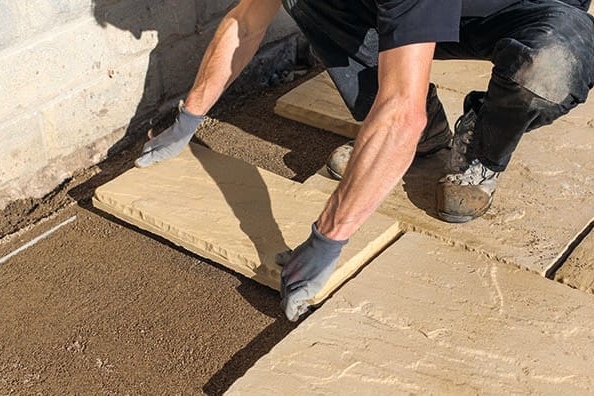
Marshall's
Materials you will need:
- Paving slabs
- Sub-base material
- Cement
- Mortar
- Kiln-dried block paving sand (for jointing 10mm or smaller joints).
- Building sand
- Long timber straight edge (to ensure your sub-base is level).
- 2-22millimetre timber or dowel off-cuts (for making spacers for joints).
- Off-cut piece of timber (to protect the slab when laying).
Tools you may need:
- Tape measure
- Hammer
- Garden spade
- Garden rake
- Spirit level
- Club hammer or mallet
- Pencil
- Hand brush
- Mixing tray
- Bucket
- Jointing tool
- Sponge
Helpful tip: Make sure when laying paving slabs that you wear safety equipment, such as gloves, masks, safety goggles, suitable footwear, ear defenders (if necessary), and knee pads.

The Spruce
How to lay a patio:
Step 1: Measure and mark up the area
Learning how to lay patio slabs can be a simple task, but it can be even simpler if you know how to do it correctly. So, before you begin installing any paving slabs, you must first measure and mark the area with tape to indicate where the patio will be placed. This step may sound tedious, but it is crucial for if you want to get your measurements correct. After you’ve measured your dimensions, you will then need to dig out the soil.
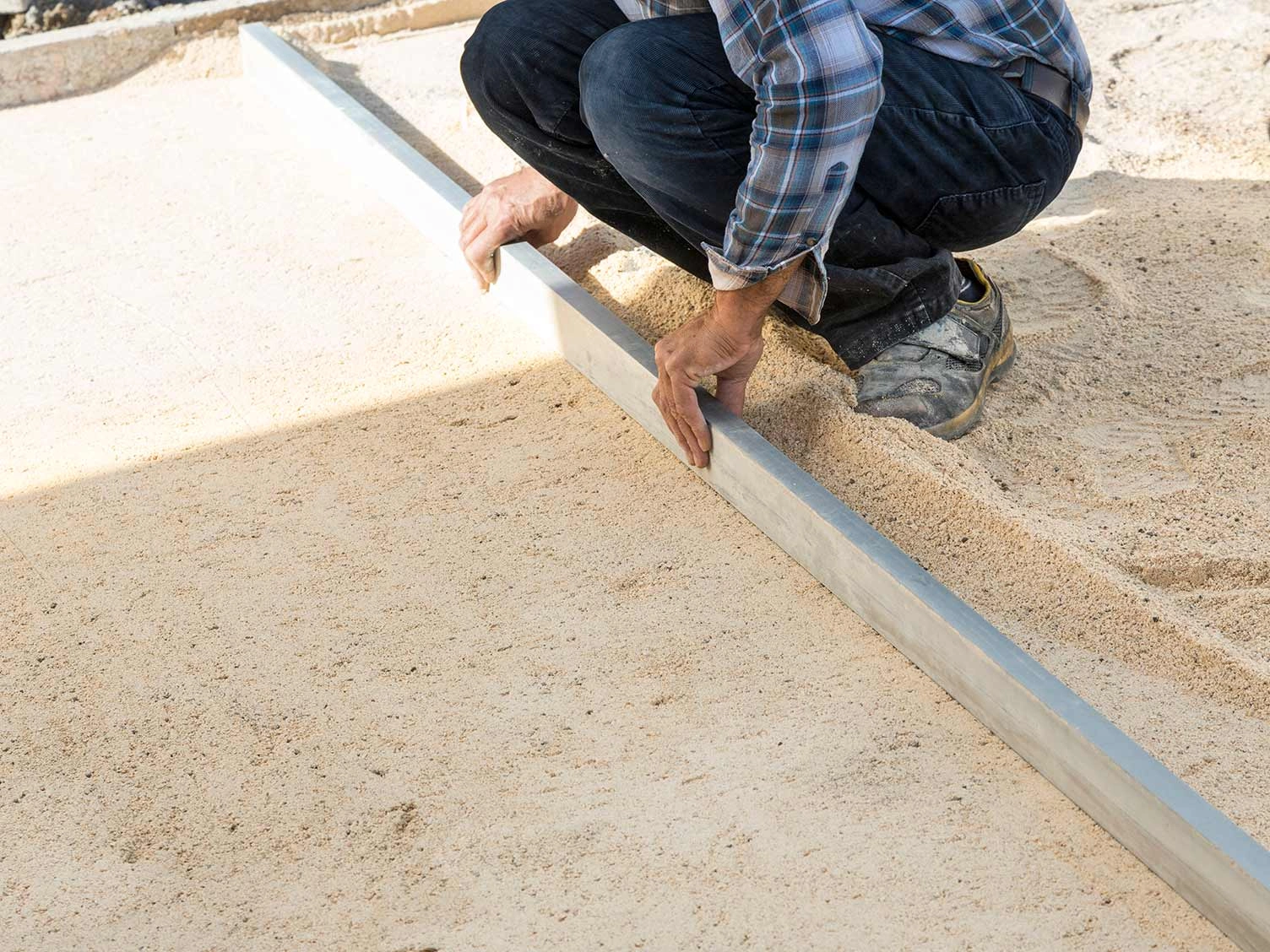
Love the Garden
Step 2: Prepare the ground
If the area is currently a lawn or has long grass, cut it into strips with a spade and roll it up. When you're done, you can keep it to fill in any gaps between the new patio and the lawn.
After that, you can start digging! Make a 150mm-deep hole, allowing for some extra depth if your slabs are exceptionally thick. If laid completely next to your home, the final patio should be at least 150mm below the damp proof course.
Helpful tip: The 150mm that you need to dig out for the patio will allow for the slab (around 20cm), laying mortar (around 40mm), and 100mm (the sub base).
The dirt at the bottom of the excavated area should be firm and hard. To test this, use the heel of your foot to see if it sinks in. If it recedes, you will have to dig further until you reach hard ground.
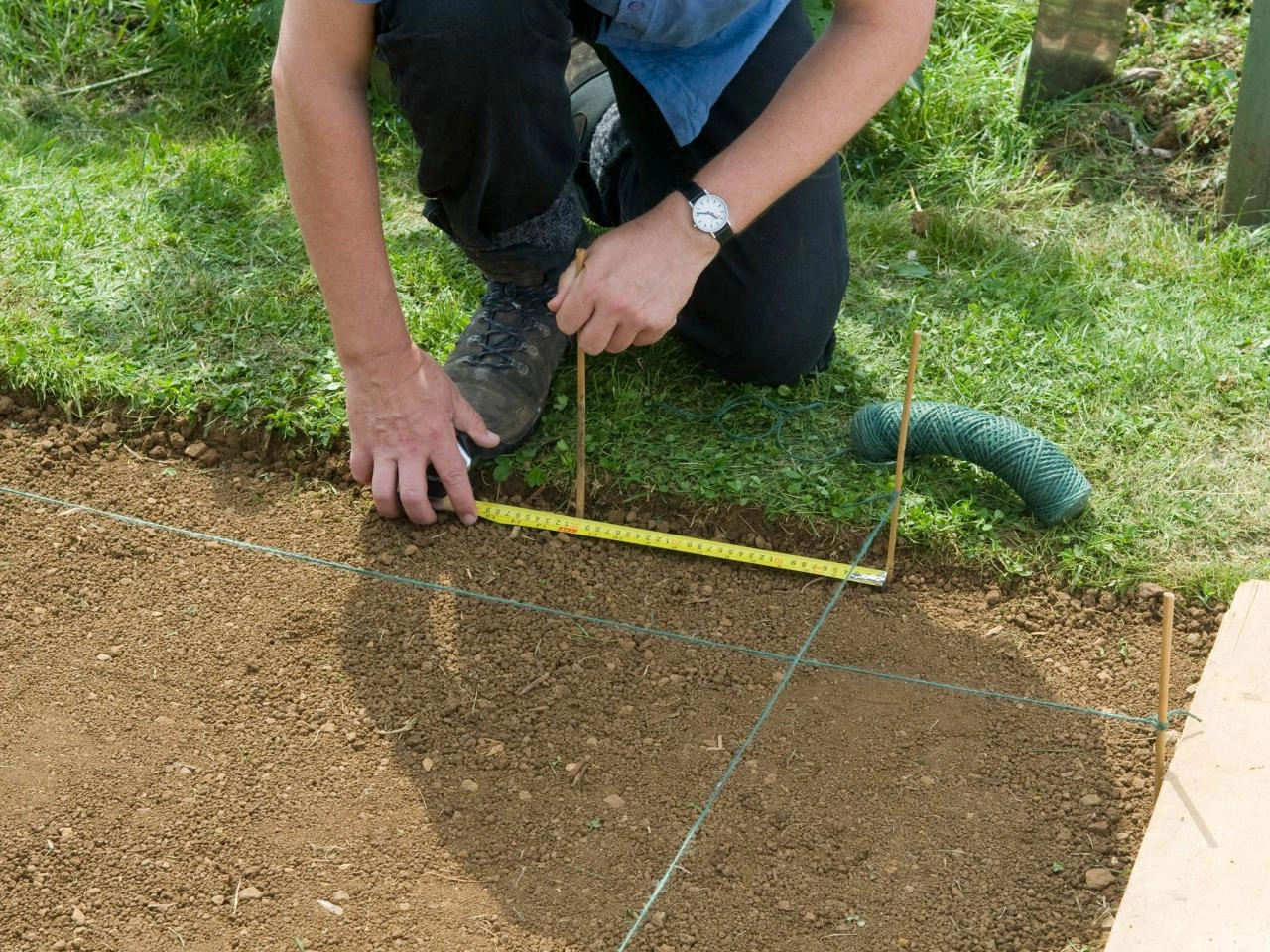
Nustone
Step 3: Prepare the sub base
Paving slabs can not be installed directly onto grass or soft ground without a sub base, as a sub base is essential for patio laying success because it provides the stability that paving slabs require. Therefore, a sub-base, which is the main load-bearing layer of your patio, will be required for if you want to lay a patio in your garden. The best sub-base for a patio is hardcore, which is laid to the correct depth, along with a binding layer of sand.
You must also calculate the patio's fall, which allows water to run down the paving's surface. The fall should be a 1:60 ratio. As a result, the drop should be 1cm for every 60cm of paving.
Hammer a peg into the ground until the top is at the level of the finished paving height, then hammer another peg where the patio should end and draw a string line between the two pegs to calculate the fall. To ensure that the fall is right, ensure that the string slopes down from the building to the patio. You can use a spirit level to check this.
After you’ve completed the installation of the fall, you can start adding in your sub base. Fill the bottom of your patio area with the sub-base and rake to an even depth of 50mm, then compact - you can do this by simply walking over it (or by hiring a vibrating plate compactor), making sure to cover the entire surface twice.

Pavestone
Step 4: Check over your base
It is vital to check the sub base once it has been laid down to ensure that it is distributed evenly and compact. Cover it with a thin layer of builder's sand to do this. It's critical that your base is flat and level, so double-check it now. When laying paving slabs, you'll need a layer of sand about 2 inches (50mm) deep above the layer of hardscape.

DIYnot
Step 5: Create the mortar
Next, make your mortar by combining five parts sand and one part cement with enough water to achieve a dough-like consistency. Realistically, it should be soft enough to work with but not runny!
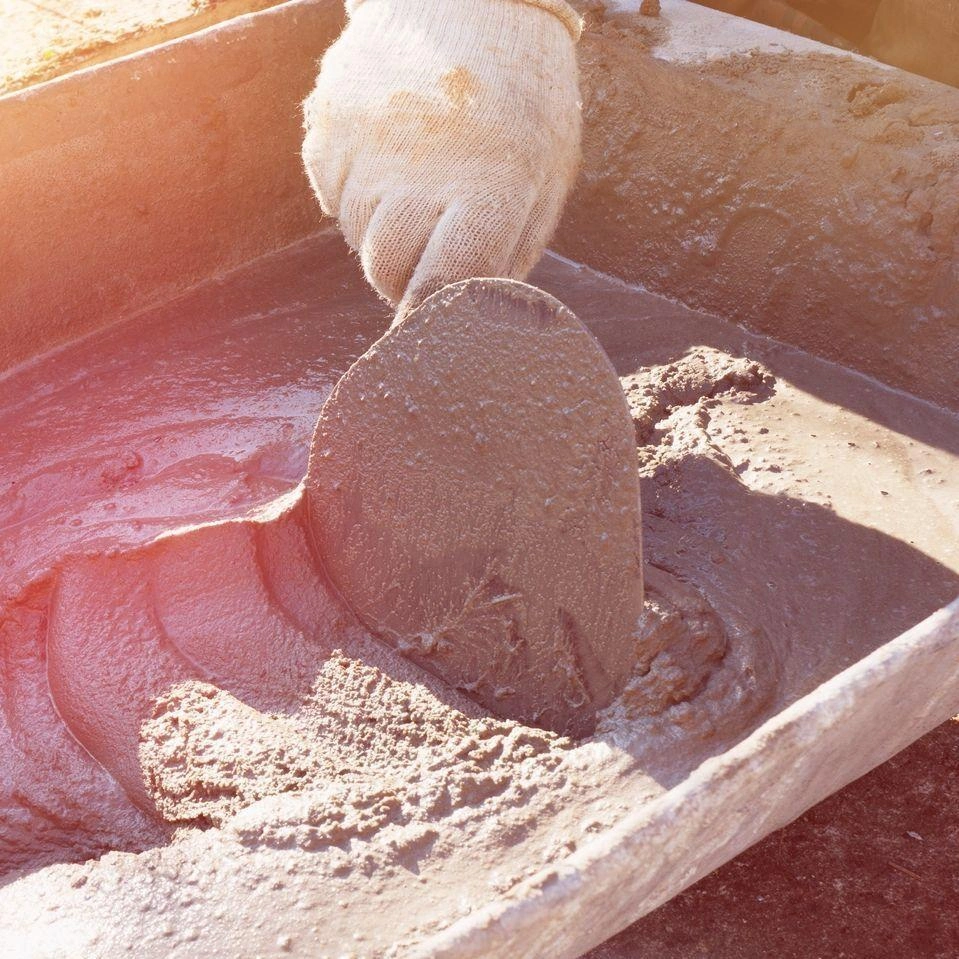
Simply Paving
Step 6: Prepare the paving slabs
Spray your pavement slabs with water from a spray bottle or softly sprinkle them with a watering can to dampen them. If you install dry slabs, the mortar mix will dry out too rapidly.
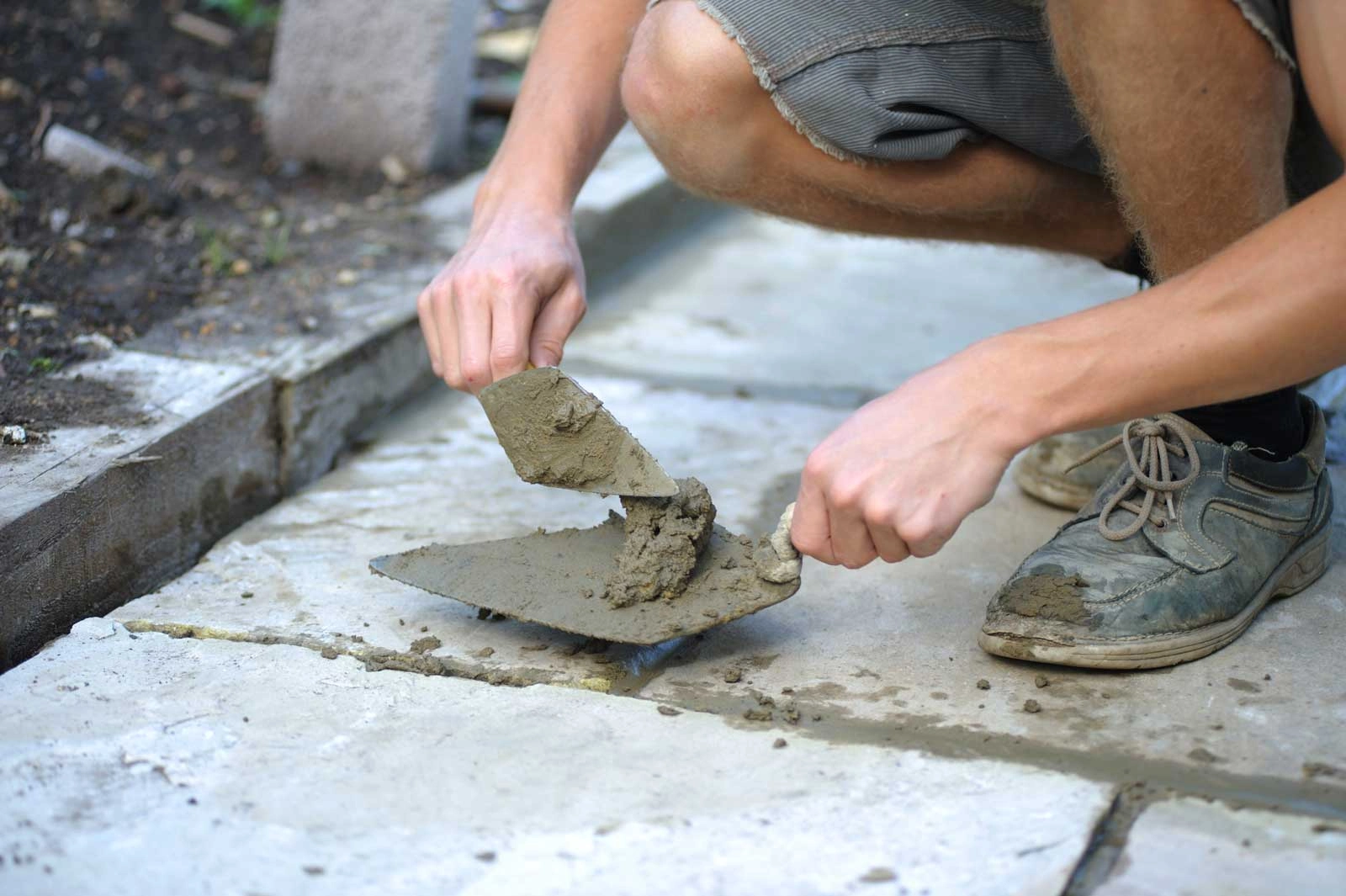
North East Paving Gardens
Step 7: Start paving!
Place a small amount of mortar in the centre of your first slab with a trowel. Always begin in a corner and work your way out. Place the slab on top of the mortar and tap it in gently with a mallet. Lay your slabs in rows, leaving 10mm gaps between them.

Checkatrade
Step 8: The finishing touches
As you go along fitting the concrete paving slabs, make sure to keep checking that they are level by placing a spirit level over them. It’s much easier to correct any unevenness now than further down the line when the paving slabs have set.
After you’ve completed the fitting of the paving slabs, leave them to dry for at least 24 hours, and do not walk over the patio during the drying process to avoid moving the slabs out of place.
Finally, once dry, finish your patio by filling in the gaps with more mortar. Mix more sand and cement in the 5:1 ratio, but do not wet it, or else it will stain your slabs. Fill in the gaps with the mixture using the trowel and brush away any excess mixture from the surface of your patio.
And there you have it, a fully completed patio!

Marshall's
We hope this guide has helped you create the patio of your dreams. If you have any other questions regarding how to lay a patio, you can contact our customer service team on the number 01472 907051. In the meantime, we have a wide range of other blogs on paving that you can read, from how to lay block paving to patio design ideas for your garden!
Recent Posts
-
An Introduction to Types of Paving
There are so many different types of paving out there, but which ones are right for your project? Wh
-
10 small outdoor kitchen ideas just in time for summer
As summer approaches, many homeowners are looking for ways to enhance their outdoor living spaces&md
